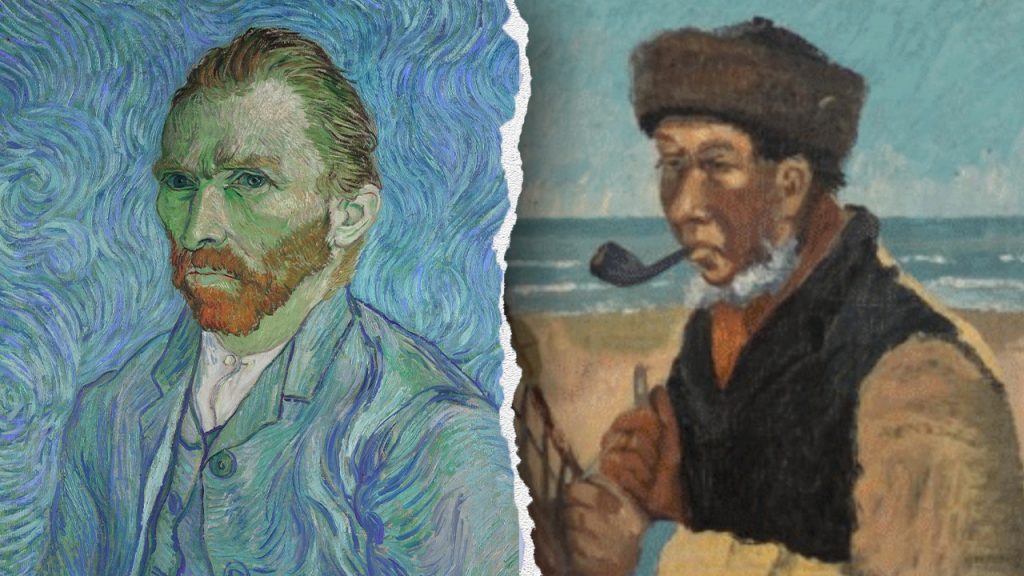The art world is abuzz with the potential rediscovery of a lost Vincent van Gogh masterpiece, tentatively titled “Elimar,” a captivating portrait that surfaced at a Minnesota garage sale in 2016 for a mere $50. LMI Group International, a New York-based art data science firm, has meticulously investigated the painting’s origins and published a comprehensive 450-page report asserting its authenticity. If confirmed, this remarkable find could be worth an estimated $15 million, a staggering return on the initial investment. The painting depicts a contemplative man with a pipe, adorned in a fur hat, standing against a serene backdrop of sky and water. LMI experts believe the artwork originates from van Gogh’s stay at the Saint-Paul sanitarium in Saint-Rémy-de-Provence between May 1889 and May 1890, a turbulent period in the artist’s life.
The painting’s discovery is shrouded in an air of mystery, adding to its allure. The only inscription found on the canvas is the enigmatic name “Elimar,” leaving its true subject and meaning open to interpretation. LMI’s report describes the piece as an “emotionally rich, profoundly personal work,” suggesting that van Gogh may have projected himself onto the canvas, reimagining himself as an older, wiser man reflecting on his life’s journey. The maritime setting resonates with van Gogh’s lifelong fascination with the sea, further supporting this hypothesis. The portrait’s dimensions, measuring 45.7 by 41.9 centimeters, align with the artist’s typical canvas sizes during this period.
LMI’s investigation delves deep into the stylistic nuances of the painting, presenting compelling evidence for its attribution to van Gogh. The three-quarter view of the subject mirrors the artist’s four self-portraits painted in 1889, a recurring motif in his work. Furthermore, the painting exhibits distinct stylistic characteristics consistently present throughout van Gogh’s oeuvre. These include specific markings under the eyes and at the corner of the mouth, the rendering of eyelashes, the use of blue or green hues for the “whites of the eyes,” a pronounced nasal-labial line, shorthand depictions of the ear’s tragus and helix, and the contrasting color of the cuff against the sleeve. These recurring stylistic elements, argue the researchers, form a compelling case for the painting’s authenticity.
Beyond stylistic analysis, LMI’s investigation employed scientific techniques to bolster their claims. A strand of red hair, partially embedded in the corner of the painting, was analyzed and confirmed to belong to a male, aligning with van Gogh’s own fiery red hair. Moreover, the painting’s finish was identified as egg white, a medium known to have been used by the artist. These scientific findings further corroborate the painting’s potential connection to van Gogh. The combination of stylistic analysis, historical context, and scientific evidence forms a compelling argument for the painting’s authenticity. The painting’s provenance, while currently obscure due to its garage sale discovery, adds an element of intrigue to the narrative, further fueling speculation and interest in its true origins.
Despite the compelling evidence presented by LMI, the Van Gogh Museum, the ultimate authority on the artist’s work, remains unconvinced. In a 2019 statement, the museum, after reviewing the material provided by LMI, concluded that the painting could not be attributed to Vincent van Gogh. This rejection, however, has not deterred LMI, who stand by their findings. Lawrence M. Shindell, LMI’s president, underscores their “data-based approach” to authentication, emphasizing the integration of science and technology with traditional connoisseurship methods. He believes their methodology represents a “new standard of confidence” in identifying unknown or forgotten artwork.
The dispute between LMI and the Van Gogh Museum highlights the complexities of art authentication, particularly when dealing with works lacking clear provenance. While LMI emphasizes the scientific and stylistic evidence, the Van Gogh Museum, with its vast expertise and access to the artist’s documented works, adheres to a stricter standard of authentication. This divergence of opinion underscores the ongoing debate within the art world about the role of scientific analysis versus traditional connoisseurship in determining the authenticity of artworks, particularly those shrouded in mystery like “Elimar.” The ultimate verdict on the painting’s authenticity may require further investigation and collaboration between experts, leaving the art world in anticipation of the final determination. The “Elimar” case serves as a fascinating example of how art historical research continues to evolve, incorporating new technologies and methodologies to unravel the mysteries surrounding potentially lost masterpieces.

